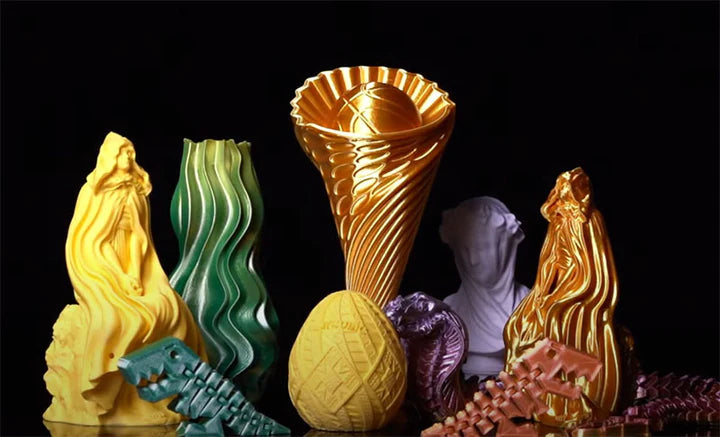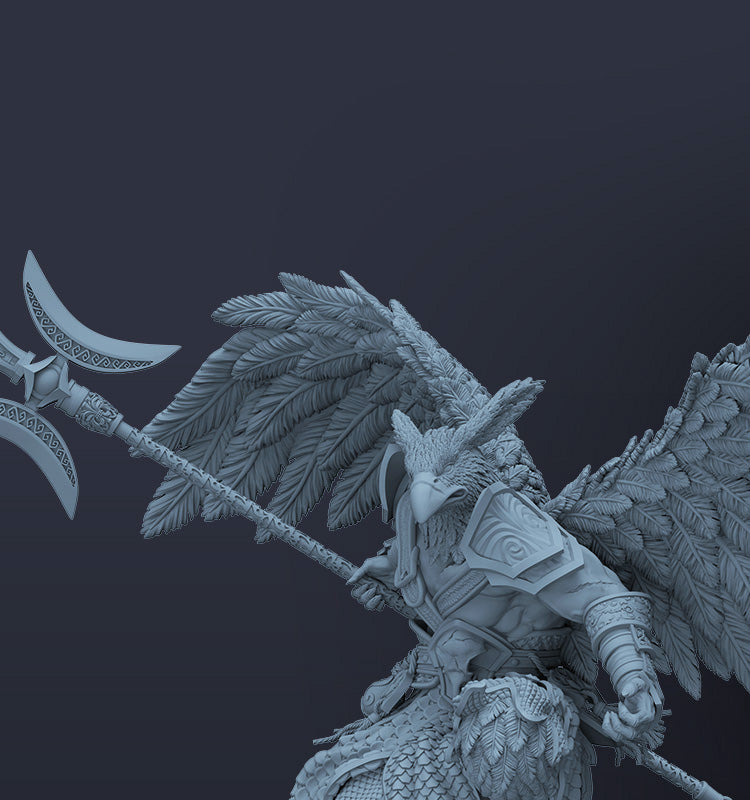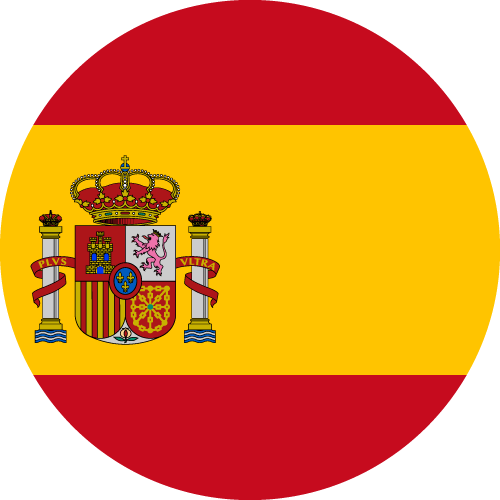3D printer requires specific materials in order to restore your ideal digital model into a physical object. SLA printers require resin to be cured by light, and for FDM printers, the filament is the material it uses. The filament for 3D printing is wound onto a spool and the printer’s extruder sents it to the hot end. Then the heated and melted material will be deposited layer by layer on the printer bed. So the important step in 3D printing is: choosing the right filament and using it correctly.

How to Choose the Filament for FDM 3D Printing
When we want to print a model with FDM 3D printer, how to choose the suitable filament also becomes a problem. What are the types of filaments? Which filament is strongest and which one is the more flexible? In this guide, we will introduce several commonly used filaments, PLA, ABS, TPU, and some special types of PLA filament, their characteristics, and their properties. Of course, we will also recommend some materials as a reference for filament cost performance.
What is a PLA Filament? Pros and Cons of PLA
Polylactic Acid (PLA) is one of the most commonly used materials for 3D printing and is popular for its ease of use, low odor, and ability to print at low temperatures. PLA is made from corn starch, a filament that can be recycled and is relatively environmentally friendly.
Why PLA is the Best?
- Ease of use, low odor, recycled
- Easier posting processing
- Satisfying print quality
- Not easily warped, adhere well to the print bed, easy to calibrate the first layer
- Many colors and styles can be selected, easy to present an aesthetic printing effect
- >Cost-effective: Anycubic Filament is the choice for high quality PLA filament

What is the Problem with PLA?
In terms of strength and durability, PLA performs as a medium and is less heat resistant than other materials. Therefore, PLA is not suitable for making some models that are easy to bend and wear. In a high-temperature environment, it will soften, and in high-intensity use, it is fragile and easy to worn out.
What is a ABS Filament? Is ABS filament Good for FDM 3D Printing?
Acrylonitrile butadiene styrene (ABS) is a thermoplastic filament, which is stronger and stiffer than PLA, and it also has higher heat resistance. Other advantages of ABS for FDM 3D printing: it has very high impact strength and high tensile strength, and the printed model will also have good chemical resistance and dimensional stability.

What is ABS Filament Best Used For?
ABS filament can provide excellent print quality and can have a smooth surface after post-processing. Due to its properties, ABS filament is one of the best choices for printing durable parts. In high-temperature environments, ABS does not soften and deform like PLA, but it should be noted that ABS is sensitive to UV light. It is not suitable for printing models that require outdoor use if they are not protected from direct UV light.
Cons of ABS Filament. Are Fumes from ABS Toxic?
ABS melts at high temperatures, it will release toxic fumes. Printing with ABS filament emits harmful VOCs and needs to be done in a well-ventilated environment.
- Higher print temperature and heated print bed required
- Easy to warp and hard to attach to the printer bed
- Difficult to print, not user-friendly for beginners
What is a TPU Filament?
TPU, short for Thermoplastic Polyurethane, flexibility is a remarkable feature of TPU. Although not as popular as PLA and ABS among 3D printing enthusiasts, TPU is also a very high-quality material with many advantages, and models printed with TPU are always durable.
Features of TPU filament. Is TPU filament Like Rubber?
TPU is also a thermoplastic, especially with rubber-like qualities. The high flexibility and durability make it very versatile, and if used for FDM 3D printing, this filament is very stretchable and can accomplish flexibility that the two aforementioned filaments cannot do. But because of its flexibility, TPU is more difficult to print.

For TPU, What Settings Should I Use for My 3D Printer?
Unlike rigid filaments, TPU may encounter more problems when used on printers, such as damped, pulling, jamming, and material bleeding. So we’d better set the right parameters to reduce the problems and improve the printing success rate.
First, you can refer to the FDM printer’s user guide to see if it is suitable for printing with TPU materials. If the 3D printer is assembled with a Bowden extruder, then it is better not to use such flexible filament as TPU to print. But there is no problem with filament winding if the printer is equipped with a direct-drive extruder. Attention should also be paid to the printer bed, prepare blue painter’s tape, which is more suitable for TPU filament and acting as a build platform, or use a glass bed coated with adhesive, then we will get a good first layer.
- Printing temperature: 230°C
- Bed temperature: 40–60 °C
- Printing speed: 20 mm/s
- First layer: Need skirts, not rafts
Fantastic PLA Finishes Recommendation
In addition to the properties of the materials, we can also learn about their printing effect, which is probably the more interesting part, and more experimental than the typical material. When you have printed many times and have a good understanding of the intricacies between the material and 3D printing, such as the adhesion of the filament to the printer bed, the first layer calibration, etc., you can start to try something special! We will recommend two materials that are most popular among 3D printing enthusiasts: the Silk PLA and the Matte PLA.

Silk PLA 3D Printer Filament: Compared with the typical PLA filament, the 3D model printed with Silk PLA has a distinctive appearance, and like its name, the model will look as shiny as silk.
Anycubic Silk PLA Filament is a good choice, environmentally friendly and high quality, perfect for elegant and beautiful decorative models. Silk PLA generally does not have warp problems. With almost no special parameters to set, you can print the ideal model successfully with Silk PLA.

Matte PLA 3D Printer Filament: Matte PLA filament can be well suited to another need, providing matte, low-gloss finishes for printed models. Matte texture with less visible layer lines and can provide a soft touch. The macaron color enhances the quality and higher level of detail of the print.
Anycubic Matte PLA Filament has a 3-year storage capacity, excellent mechanical properties with high toughness and low shrinkage, which makes it easier to remove the support of the print and to present the best printing results.





